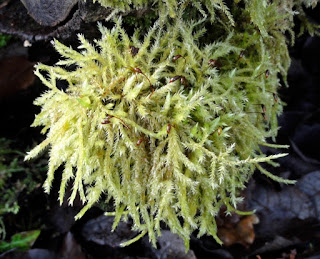This has to be one of the simplest, and best, ways to preserve fresh garden vegetables. It doesn't involve cooking and it keeps and enhances the colour, flavour and texture of your surplus to enjoy in the less productive times of the year. You can use many different vegetables depending on what's available and the preparation is the same for all of them:-
Wash in cold water to remove soil etc, but leave the skin on as you are relying on the natural enzymes and bacteria to start the fermentation process. Use only home-grown or organic to avoid treatments which may prevent the process from starting.
Slice thinly with a sharp knife - get your friendly spoon carver to show you how to sharpen a knife properly!
Start with a couple of layers in a preserving jar with a
little sea salt and pound gently with a wooden pestle to break down the cells to release the liquid.
Add more layers and salt as above and keep pounding/pressing the vegetables until the jar is full to the top and the liquid is covering it. This will take about 4 times the amount you think and is not a quick process. If you are short of time stop reading blogs and emails for a day and you will be able to fit it in easily!
The jar should now look like this:-
Put the open jar in a bowl to catch any liquid which will overflow. Put a jam jar full of water (for weight) on top as you need to keep pressure on the vegetables. A cloth over the top will keep it clean. Leave it in a warm room for a few days. Every time you pass it give the weighted jar a press and soon bubbles will start to rise as the fermentation begins:-
After about a week, depending on the temperature, the fermentation will have slowed down. Remove the jam jar, add any liquid from the bowl to cover the vegetables and seal the top and store in a cool, dark place ready for the time you have run out of fresh produce. This will also save you a bike ride to the shop. You will have a crisp and very tasty food which is quite different to pickle. Use it as a winter salad but do not heat it as this will damage the lactic ferment which is good for the digestion.
What vegetables to use? Well, white, red and green cabbage all work well, especially if combined in layers of different colours. This is how sauerkraut is made but a lot of commercially made ones are sterilised after filling the jars which destroys the ferment. I also use beans, beetroot, celery, peppers, chilli, carrots, root ginger (very fine threads and only a little) and spinach, but not onions as they dominate the flavour. Seaweed and wild foods can be added for variety and extra minerals. Use strongly flavoured things sparingly otherwise you will not be able to taste the other vegetables.
Kimchi is made this way too, but a lot of chilli is added to really spice things up! Use small preserving jars so you can experiment with different combinations. Leave the sealed jars for a few weeks, if you can wait that long, and once opened keep a liquid layer on top and store in a cool place until finished. If you leave it too long after opening a white mould develops so probably best to put it on the compost heap which will enjoy the extra bacteria, and use smaller jars next time.
















































